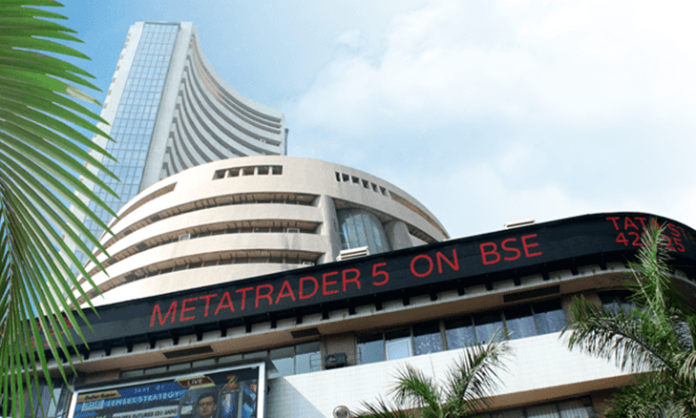This article is written by Anumeha Agrawal pursuing BA.LLB (Hons.) from Symbiosis Law School, Pune. This is an exhaustive article on the Bombay Stock Exchange with its history, functioning, contribution to the capital market and its success rate. Additionally, it also discusses other international stock exchanges.
Table of Contents
Introduction to BSE
BSE formerly known as Bombay Stock Exchange is the oldest stock exchange of Asia. It was established by Mr Premchand Roychand in 1875 as the Native Share and Stock Brokers Association. In 1957 it was the first stock exchange identified under Securities Contracts (Regulation) Act, 1956.
It is globally the fastest and the largest stock exchange in the world in terms of entities listed on it, i.e. over 4500 companies and more than 2.6 crore investors. It is the 10th largest exchange by virtue of its market capitalisation of the listed entities over a hundred trillion rupees. The exchange also provides the largest platform for Small and Medium Enterprises as well.
History behind the establishment of BSE
The BSE was started under a banyan tree (now Horniman Circle) by four Gujarati stock-brokers and one Parsi broker of Mumbai Town Hall, the location changed as the number of brokers increased, and finally by 1874 moved to Dalal Street. In 1875, it got registered as a stock exchange named as Native Share and Stock Brokers Association under SCRA. In 1980, the exchange moved to Phiroze Jeejeebhoy Tower, Dalal Street, Fort Area.
Standard & Poor’s Bombay Stock Exchange or S&P BSE, was the first equity exchange index developed in 1986 to monitor the wholesome performance of the exchange.
Earlier the operations were only limited to Mumbai due to the limitations of trading by open outcry system on the floor of the BSE, but in 1995, by the introduction of online trading the BSE also shifted its operations to BOLT- BSE Online Trading and within 2 years its operations were widened throughout the nation.
The objectives behind the establishment of BSE are:
(i) Promote investment culture
(ii) Create an easily accessible platform for savings and investments
(iii) Provide a securities market
(iv) Enhance the fund availability to entrepreneurs
(v) Maximize the return on investor’s investments
(vi) Promote development, regulation and fair practices in the capital market
(vii) Stabilizing the prices
How the BSE Works?
Earlier the trading members had the control and management of the stock exchanges, as a result in case of disputes the interests of the brokers were preferred over that of the investors. This model was more suitable for regional exchanges.
However, the liberalization of the economy and ease in communication led to a shift in the focus of the market from the brokers to the investors. Hence, many measures were taken to separate trading rights and ownership and management, the foremost of which was the corporatisation of Stock Exchanges.
BSE is essentially a platform for trading various securities and other instruments, on it various market participants like issuers, investors and intermediaries get registered to trade. The exchange is governed by SEBI and has to develop a code of conduct which is in adherence to the model code of conduct developed by the Regulator. The company who’s instruments are to be traded on the exchange are to be listed, the eligibility requirements to be listed and continued to be listed are quite strict due to involvement of public funds.
The listed securities are traded only on the stock exchanges so to enable the regulator, exchange and the investors to keep track of the position of the securities, the trades happen only from 9 am to 5 pm on weekdays.
SEBI has also made various regulation to govern specific market participant or to prevent specific practice like SEBI ( Prohibition of Insider Trading) Regulations, 2015, SEBI (Prohibition of Fraudulent and Unfair Trade Practices) Regulations, 2003, SEBI (Intermediaries) Regulations, 2008 etc.
The company has eight directors with a Chairman, MD & CEO, five public interest directors and one shareholder director. In the management, it also has a Chief Regulatory Officer, Chief Financial Officer, Chief Information Officer, Chief Business Officer, Chief Trading Operations and Listing Sales and lastly a CS and Compliance Officer.
Other Major International Stock Exchanges
Some other major international stock exchanges are as follows:
New York Stock Exchange
The NYSE is the largest stock exchange of the world with a physical as well as electronic trade floor. It was wounded in 1792 on 68 Wall Street by signing the Buttonwood Agreement, it is so-called because they met beneath a Buttonwood tree in order to form a centralised exchange for a flourishing securities market. It has the largest market capitalisation of 13.4 trillion dollars.
It is a trading market primarily for buyers and sellers of securities, however, the intermediaries also play a functional role in the system. Irrespective of the method of trading all sales are via auction. On the platform, the trading is conducted by designated traders which are assigned by the NYSE to each stock to provide liquidity.
It has more than 2400 companies listed on it combining to be 30.1 trillion dollars in market capitalization covering various sectors like banking, infrastructure, finance, energy etc.
The biggest corporations listed on NYSE include Bank of America, Food Motors Co., Sprint Corp, General Electric Co., Twitter etc.
NASDAQ Stock Exchange
National Association of Securities Dealers Automated Quotations (“NASDAQ”) is an American stock exchange and was established in 1971. It is a completely electronic exchange for stocks and other securities trade, by virtue of its market capitalisation of 13.4 trillion dollars as well as over the counter stocks, it is the second-largest in the world.
Its aim from the beginning was to establish the first and exchange for electronic trading devoid of any physical trading floor. When it launched its website and stored records on the cloud, it sold the same technology to other exchanges as well. Originally the exchange only provided automated quotations then it started facilitating over the counter transactions to the extent that it became synonyms to the OTC market. It is essentially a dealers market and thus all trades take place via dealers or market makers.
It has some of the biggest blue-chip companies in the world like Apple, Amazon, Microsoft, Netflix, Facebook, Starbucks, Tesla, Oracle, Starbucks etc.
Tokyo Stock Exchange
Tokyo Stock Exchange (TSE) was established in 1878, it is the third-largest stock exchange of the world by virtue of its market capitalization of 3.8 trillion dollars. It is the largest in Asia with more than 3700 companies listed on it. It is the subsidiary of Japan Exchange Group and is located in Kabuto-Cho.
Originally TSE also operated trades on the floor by auction and open outcry mode for more than a decade, this mode simply means the trades happened on the floor of the stock exchange by traders shouting their bids and the exchange brokers accepting the highest one. Due to WWII’s financial strain, TSE was temporarily closed and was only redeemed in May 1949. The post-war era Japan witnessed an extraordinary economic growth, especially in the equities market. This was a result of significantly low military spending due to the disarmament period leading to an exponential growth in market capitalisation.
The exchange has divided public offerings in four sections based on the number of shareholders, namely 1st Section, 2nd Section (together called the main market), mothers and Japan Association Of Securities Dealers Automated Quotation (“JASDAQ”). The number of shares and the market capitalization with the biggest companies falling under the 1st section and the smallest in the JASDAQ.
The leading corporates listed on TSE are Toyota, Docomo, Honda, Nippon etc.
London Stock Exchange
The London Stock Exchange is approximately three centuries old, it was created in 1698 by Thomas Gresham. It was originally named ‘The Course of Stock Exchange and other things’ in a Coffee House and it became the first regulated exchange in 1801.
It is the fourth largest exchange by market capitalization of 3.6 trillion dollars, it operates throughout Europe. It is also a part of international stock exchange group-LSE Group PLC along with Borsa Italiana, MTS and PAN European equities and derivatives platform and via which the investors have access to over 100 countries.
EURONEXT
Euronext is the largest stock exchange in Europe created by stock exchanges of Amsterdam, Brussels and Paris. Its market capitalisation is 2.9 trillion which is the sixth-largest in the world. It has merged with several stock exchanges including NYSE in 2007 and was also acquired by Intercontinental Exchange in 2013 however, it became independent again in 2014.
Notably, it was established much recently in 2000 after the formation of the EU to aid the newly integrated economy and markets of the Eurozone It has over 1300 issues.
Contribution of BSE in the development of India’s Capital Market
BSE was the first stock exchange of the country it has led the way in the development of the securities and the capital market. Since its incorporation, BSE has aimed at promoting the investment culture in the country, by establishing a trustable platform for trading it developed the investors’ trust in the capital market.
BSE has also taken considerable initiatives for investor protection like establishment of Investor Protection Fund in the year 1986 itself- two years before the incorporation of Securities Exchange Board of India Act, 1988.
The efficient online trading mechanism developed by it in the form of BSE- Online trading (“BOLT”) has allowed the investors to invest without geographical bounds and further integrating the country-wide capital market for the investors and the issuers. Additionally, BSE also keeps pace with the current requirements of the market, it developed an exclusive platform for trading in equities of Small and Medium Enterprises which has improved the credit availability of the SMEs.
Success of BSE
BSE’s success is represented by various indicators, the first and foremost is its extraordinary growth over the last 145 years from a stock-broking club of five brokers under a tree to an international stock exchange with the largest number of members with more than 5000 companies.
In the year 2019, the Forbes magazine recognised BSE as the tenth largest stock exchange of the world. BSE has kept itself technologically updated as it has a speed of 6 microseconds making it the world’s fastest Stock Exchange, see here.
Another clear indicator of BSE’s incredible success rate is the S&P BSE Sensex itself, the index comprises 100 stocks listed in five major exchanges such as Ahmedabad, Bombay, Calcutta, Delhi and Madras. It has also introduced industry-wise indexes in view of large market capitalisation in new sectors. The index measures rise and fall in the prices of scrips of the stock market (scrips are an alternative to tender which entitles the bearer to receive the specified amount). The calculation of the index by a free-float capitalisation mechanism this means multiplying equity’s price by a variety of available shares and excluding the directors’ and promoters’ shares (as they are mostly unavailable for sale).
As the market transactions grow the index value also grows, its initial value in 1979 was taken as 100 by 1990 it had reached 1000 and its current value is 38,845 on September 18, 2020.
Conclusion
In conclusion, it can be said that BSE has played a pivotal role in the Indian capital market development. It has also been extraordinarily successful in development of securities trading activities, increasing liquidity in the market and protection of investors.
References
- https://www.researchgate.net/profile/Venkataramanaiah_Malepati/publication/289504506_The_Profile_of_the_Bombay_Stock_Exchange_Limited/links/5722734f08ae586b21d3f800/The-Profile-of-the-Bombay-Stock-Exchange-Limited?origin=publication_detail.
- https://www.forbes.com/pictures/eddk45iglh/the-worlds-biggest-stock-exchanges/#6cc46ff56d2b.
- https://www.bseindia.com/static/about/History_Milestones.html.
- https://www.nyse.com/american-stock-exchange.
- https://www.nasdaq.com/about.
- https://www.lseg.com/about-london-stock-exchange-group/history.
- https://www.jpx.co.jp/english/corporate/about-jpx/history/01-02.html.
LawSikho has created a telegram group for exchanging legal knowledge, referrals and various opportunities. You can click on this link and join:
 Serato DJ Crack 2025Serato DJ PRO Crack
Serato DJ Crack 2025Serato DJ PRO Crack











 Allow notifications
Allow notifications



